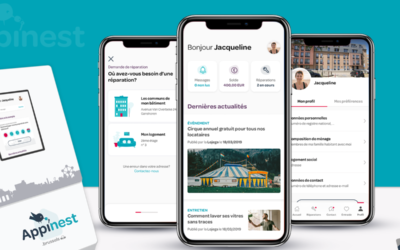A hands-on 3-step approach on how to transition from a well-defined value proposition towards a Service Blueprint, making the proposition actionable for the entire organization.
Did you ever wonder why we, consumers, often perceive a brand the same way others do? This shared perception is no coincidence.
Behind most brands, a whole bunch of people work on what is called a ‘value proposition’ for the brand and make sure it’s delivered consistently.
In short, a value proposition is a statement that explains what benefit the brand provides for whom and how it does it uniquely well. To give you a couple of examples:
- Spotify: ‘Music for everyone, right?’
- Uber: ‘Get there: Your day belongs to you’
- Aldi: ‘Great product at low prices’
- Tesla: ‘Provide best in class EV models with high performance’
- Nespresso: ‘Make premium quality espresso at your home’
Still, having a catchy one-liner does not directly mean your brand will be perceived the way you would like it to be. The key for success is in the translation of that value proposition into the product or service experience you want to bring to market. But… how do you do that?
For a recent project, a global automotive company asked us the same question for its newest EV ranges which needed to be positioned in the B2C market. More specifically, the company wanted to understand how to best position the concept of usership, such as leasing, which is already very established in a B2B context, in a B2C context for Electric Vehicles. This while still aligning with its brand-specific value proposition and responding to changing market developments.
Generally, the starting point of such an exercise is the Value Proposition Canvas of Strategyzer, a global leader in enterprise growth & innovation services.

This is a strategic tool which helps start-ups, scale-ups and big internationals:
- Precisely define their customer profiles
- Visualize the value they create/would like to create
- Achieve Product-Market fit
Curious to know how we apply this to out work? Then keep on reading! Find below the activities we’ve performed with our client to identify their own value proposition:
1. Precisely define your customer profiles
Desk research should always be the starting point of a research process, simply to not reinvent the weel. It helps you identify major market trends, identify interesting data collections which will help you to define different target groups.
As a next step, this research allows you to draft interview questions to dig deeper into the needs and emotions of potential buyers along the end-to-end user journey. These questions are often used during focus groups and/or individual interviews with both existing and potential customers.
Consolidating the interview and focus group outcomes enables you to identify different personae and their corresponding user journeys. These user journeys visualise all the different user actions, feelings and needs along the TO-BE user journey.
2. Visualize the value you create/would like to create
Next, the combination of the different personae and their corresponding journeys are presented in several internal workshops with representatives of the different departments of the client (e.g., finance, value chain, sales, insurance, etc.).
During such a workshop, the representatives are asked to (1) discuss their main observations from the presented user research in groups and (2) identify where they see today’s gaps between the AS-IS and the TO-BE situation to (3) define which (collaborative) actions are needed to overcome that gap.
Once again, outcomes are consolidated into one visual representation of what the ideal user journey should be, while guaranteeing the experience is fully in line with the brand’s value proposition and responding to the identified needs resulting from user research to deliver a differentiating user experience.
3. Achieve Product-Market fit
Based on the identified gaps from a series of internal workshops, you can easily define high-level organizational actions needed to successfully deliver the TO-BE experience. Mostly, these actions require changes in one or more of the following organizational vectors: process, people & technology. An example action for process in the context of the automotive client: ‘Partner-up with wall box installers to offer one-stop-shop packages so that customers feel all is being taken care of for them in advance.’
In many cases you will end up with a never-ending list of actions to achieve the ultimate ambition. Now, it all comes down to prioritizing these actions as most organisations simply cannot focus on everything at once (although your client will say they can ).
Key in this stage of the process is bringing people from both the business and decision-making side around the table to evaluate and prioritize each action along 3 dimensions: feasibility, business value and customer value. As a facilitator you better be prepared for some serious discussions.
The final result of this exercise is a prioritized backlog of actions allowing you to build a first roadmap of activities to bring these projects to live, each one with a dedicated owner. Once a selection of actions has been made, one can start building a Service Blueprint. This is a visual representation of the TO-BE front-end experience combined with the back-end service components (people, technology & processes) that are directly tied to the different touchpoint in your user journey. How to bring this Service Blueprint to life, is described in ‘What is a Digital Studio?
As you can imagine, this is a multi-year exercise: leadership should be aware that the biggest chunk of work is in the tail of this approach. Only with a long-term and agile attitude, allowing failures, successes can and will be reached.




